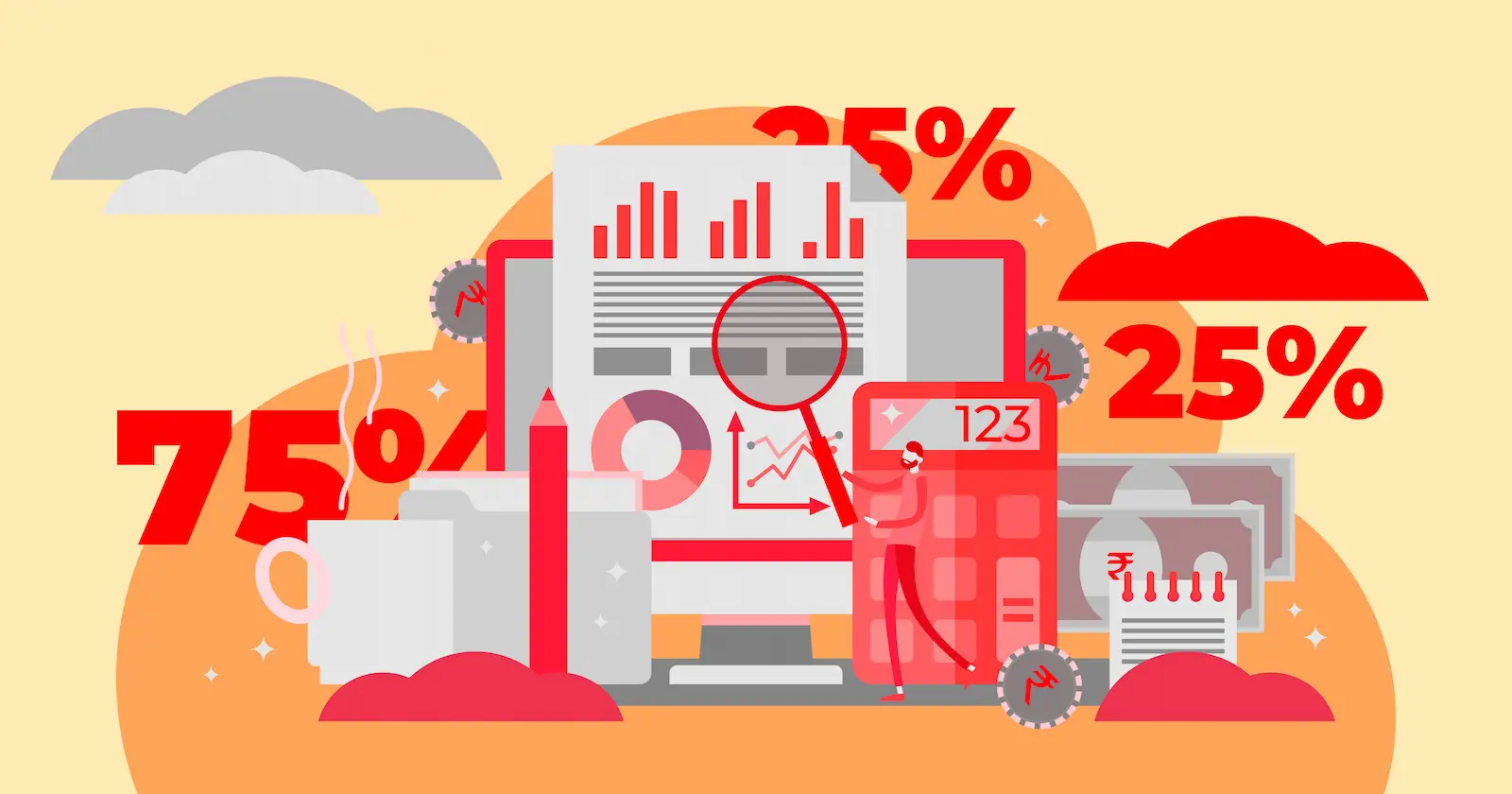Cost-adjusted inflation: The purchase price of a capital asset needs to be fixed as per the rate of inflation for the duration of its holding. This is referred to as indexation. When calculating the long-term gains on goods at the time of sale, this inflated cost is assumed as the price at which it was purchased.
The government fixes cost inflation index (CII) numbers in its official gazette every year to account for inflation. CII for 2001, the base year for income tax purposes, is fixed at 100 and increases for every subsequent year. CII values allow for inflation adjustment in the cost of capital to arrive at its actual value as per the market rate at present.
The cost inflation index:-
| Financial year | Cost inflation index |
|---|---|
|
2001-2002 |
100 |
|
2002-2003 |
105 |
|
2003-2004 |
109 |
|
2004-2005 |
113 |
|
2005-2006 |
117 |
|
2006-2007 |
122 |
|
2007-2008 |
129 |
|
2008-2009 |
137 |
|
2009-2010 |
148 |
|
2010-2011 |
167 |
|
2011-2012 |
184 |
|
2012-2013 |
200 |
|
2013-2014 |
220 |
|
2014-2015 |
240 |
|
2015-2016 |
254 |
|
2016-2017 |
264 |
|
2017-2018 |
272 |
|
2018-2019 |
280 |
|
2019-2020 |
289 |
|
2020-2021 |
301 |
|
2021-2022 |
317 |
|
2022-2023 |
331 |
Impact of the base year: The revision of the base year to 2001, means that if a capital asset bought prior to April 1, 2001 is sold in 2015, its cost would be its FMV as on April 1, 2001, the base year for income tax purposes. Since gold prices have appreciated only after 2007, those holding on to it would not feel much impact.
Individuals with unlisted shares on which securities transaction tax (STT) has been paid would get an advantage. Their tax outgo could be reduced by considering the FMV on April 1, 2001, as the purchase price when calculating profits on shares that increased in value between the time that they were bought and April 1, 2001.
Who benefits the most?
The revision of the base year has been most beneficial to property owners. This is because while property prices have risen nearly around10 times between 1981 and 2001, the index has only quadrupled from 100 to 406. Those who have invested in property will thus get the full benefit of indexation with the index being in tune with the corresponding rise in the property.
Calculation of cost of acquisition :
- 1. F.M.V. of property on 1-04-2001 XXX
OR
S.D.V. of property on 1-04-2001 XXX
Whichever is lower XXX
2. cost of acquisition XXX
= Whichever is higher XXX
Suppose Mr. X bought a house for ₹ 45 lakh in 1990 and sold it for ₹ 3 crores. His long term capital gains would be as follows:
| Particulars | Sale during 2016-17 | Sale during 2017-18 FMV > acquisition cost | Sale during 2017-18 FMV < acquisition cost |
|---|---|---|---|
|
FMV as on 1.4.2001 |
Not Applicable |
1,10,00,000 |
40,00,000 |
|
Sale amount |
3,00,00,000 |
3,00,00,000 |
3,00,00,000 |
|
Indexed cost of acquisition |
2,78,15,934 (Purchase price * CII of 2016-17 / CII of 1990-91) (45,00,000*1125/182) |
2,99,20,000 (FMV * CII of 2017-18 / CII of 2001-02) (1,10,00,000*272/100) |
1,22,40,000(FMV or purchase price whichever is higher* CII of 2017-18 / CII of 2001-02) 45,00,000*272/100) |
|
Long Term Capital Gains |
21,84066 |
80,000 |
1,77,60,000 |



Comments